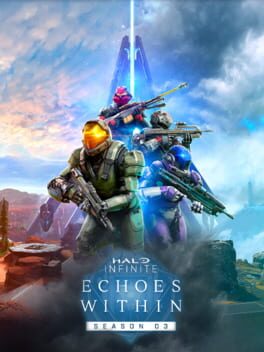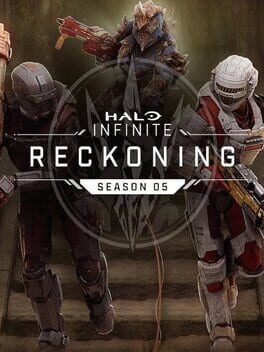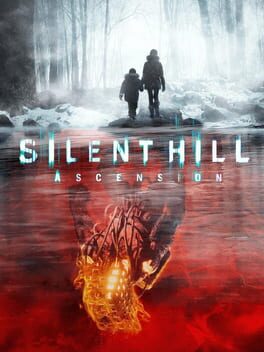ARW3
BACKER
2022
Pentiment is a phenomenal achievement in narrative presentation and depth. Josh Sawyer's passion project is filled with unrivaled respect for the many practices, pitfalls, and perspectives that contribute to historical interpretation.
The title of the game itself invokes its thematic nature. Masterfully, Pentiment peels back the layers of Tassing's complicated past over the course of its expertly paced story, just as one might peel back the superficial layer of a painting only to discover a concealed image beneath it. This fictional town could not be better realized and serves as a perfect backdrop for the disturbing series of events that break its apparent peace. Art, music, costume, dialogue and customs of 16th century Bavaria are lovingly brought to life in Pentiment. The lives of Tassing's townsfolk feels organically contextualized and believable, whether they be clergy, peasants, nobles, hermits or professionals. The attention to detail in this game is frankly staggering. Whether it be the encyclopedia of readily accessible historical information or subtle changes in font Pentiment employs to indicate the perceived intelligence of a speaker, there is an impressive effort to constantly teach the player more about the world they are exploring. Andreas Maler serves as the primary protagonist for this game. Beginning as a journeyman artist, you follow him throughout his lifetime as Tassing progresses through time, hardship, and mystery. His perspective is often purposefully equivocal, allowing room for the player to bring their own interpretations to the narrative that unfolds. Additional player agency is delivered via various "backgrounds" and "studies" we can ascribe to Maler. These provide a surprising variety of interesting tools for navigating conversations throughout Pentiment. However, Maler's core beliefs are realized in such a way where it grows easy to become attached to this complicated, imperfect character.
Pentiment pushes the player forward on a compelling narrative path that gives ample space for personal reflection. Thematically, this game is wonderfully ambiguous. It delves into the nuance of meaningful decision-making and the impossible choices perfectly ordinary humans may be faced with, shattering perspectives of "good vs. bad" that we so often see in video game narratives. Assuredly, players will see the profound downstream effects of their actions and choices. The uncertainty behind every answer the player provides is reflective of the time period it is set, and for the uninitiated Pentiment strives to give context to the great social upheavals seen in 16th century Europe. The intricacies of social class, religion, tradition and other integral aspects of society are not spoken of in concrete terms. Pentiment speaks to the human condition as it relates to the faithful interpretation of the historical setting in which it is set. It explores personal legacy by questioning how we develop, pursue or define our dreams, ambitions and happiness. Most uniquely, Pentiment challenges how we view history… it asks us to think more critically about how the history of a place or a group of people becomes known. It asks us to consider how the interpretation of that history alters over time. Of course, it also inquires about how and to what extent our history should be preserved for future generations.
Although not a historian myself, I hold a Bachelor's of Art in History and have a great deal of love for the frameworks we utilize to study the past. Pentiment, in my opinion, is a near-perfect love letter to the subject's strengths, challenges, and values to society. It won't be a game that appeals to everyone, as is the case with most side-scrolling narrative adventures void of combat encounters or striking 3D visuals. For me, it provided what might just be one of my favorite gaming experiences I've ever had.
The title of the game itself invokes its thematic nature. Masterfully, Pentiment peels back the layers of Tassing's complicated past over the course of its expertly paced story, just as one might peel back the superficial layer of a painting only to discover a concealed image beneath it. This fictional town could not be better realized and serves as a perfect backdrop for the disturbing series of events that break its apparent peace. Art, music, costume, dialogue and customs of 16th century Bavaria are lovingly brought to life in Pentiment. The lives of Tassing's townsfolk feels organically contextualized and believable, whether they be clergy, peasants, nobles, hermits or professionals. The attention to detail in this game is frankly staggering. Whether it be the encyclopedia of readily accessible historical information or subtle changes in font Pentiment employs to indicate the perceived intelligence of a speaker, there is an impressive effort to constantly teach the player more about the world they are exploring. Andreas Maler serves as the primary protagonist for this game. Beginning as a journeyman artist, you follow him throughout his lifetime as Tassing progresses through time, hardship, and mystery. His perspective is often purposefully equivocal, allowing room for the player to bring their own interpretations to the narrative that unfolds. Additional player agency is delivered via various "backgrounds" and "studies" we can ascribe to Maler. These provide a surprising variety of interesting tools for navigating conversations throughout Pentiment. However, Maler's core beliefs are realized in such a way where it grows easy to become attached to this complicated, imperfect character.
Pentiment pushes the player forward on a compelling narrative path that gives ample space for personal reflection. Thematically, this game is wonderfully ambiguous. It delves into the nuance of meaningful decision-making and the impossible choices perfectly ordinary humans may be faced with, shattering perspectives of "good vs. bad" that we so often see in video game narratives. Assuredly, players will see the profound downstream effects of their actions and choices. The uncertainty behind every answer the player provides is reflective of the time period it is set, and for the uninitiated Pentiment strives to give context to the great social upheavals seen in 16th century Europe. The intricacies of social class, religion, tradition and other integral aspects of society are not spoken of in concrete terms. Pentiment speaks to the human condition as it relates to the faithful interpretation of the historical setting in which it is set. It explores personal legacy by questioning how we develop, pursue or define our dreams, ambitions and happiness. Most uniquely, Pentiment challenges how we view history… it asks us to think more critically about how the history of a place or a group of people becomes known. It asks us to consider how the interpretation of that history alters over time. Of course, it also inquires about how and to what extent our history should be preserved for future generations.
Although not a historian myself, I hold a Bachelor's of Art in History and have a great deal of love for the frameworks we utilize to study the past. Pentiment, in my opinion, is a near-perfect love letter to the subject's strengths, challenges, and values to society. It won't be a game that appeals to everyone, as is the case with most side-scrolling narrative adventures void of combat encounters or striking 3D visuals. For me, it provided what might just be one of my favorite gaming experiences I've ever had.
2023
Had a nightmare the first night I tried this. Still got a Bulbasaur the next morning, which was kinda neat. Funny idea this game, but it asks for too much time.. the systems are a bit convoluted and the tutorial dialogues drag out. It also kind of gives your phone too much of a workout. As far as sleep tracking accuracy goes? There are better options, albeit less gamified. Also, this game weirdly stipulates that "8.5 hours" is the ideal sleep length for a young adult... and this is needed for maximum "points" on a given night, which is strange. Overall, this is an odd package that would have ironically benefited from being more simple.
The notion that we are now embarking on a 'saga' for Senua feels apt. Hellblade II allows her character to further evolve and develop in ways I did not necessarily anticipate after finishing the first game. The first game served, loosely, as a staging ground for Senua to contend with her psychosis and grief. Here, as Senua journeys to Iceland, we see a protagonist more in control of what previously was poised as her debilitation. It is refreshingly ambiguous as to how much of this story is realization of myth, Senua's psychosis, or a medley of realities. Still, it is clear that as Senua contends with new existential and physical challenges, she is better equipped to orient the majority of the voices in her head to the task at hand. Hellblade II's narrative was excellent, and without leaning too much into spoilers, showed us a more empathetic Senua than we had previously known. Hellblade II does a brilliant thing in showing her fortitude and ability to adapt her own learnings and struggles to ease the pains or fears of others. It's a heroic thing, really.
Hellblade II, as is known to most people aware of the game, is a masterpiece in visual and audio presentation. It is without doubt the greatest realization of the "photorealism" visual-style made popular by AAA narrative experiences. The binaural audio is perhaps even more brilliant, delivering pondering voices, disquieting susurrations or nuanced musical build-ups as the action sequences ramped up. In regards to those action sequences, I found them frequent enough for me in Hellblade II's modest run-time. However, the combat has not evolved as much as Senua's character has since her 2017 debut title. In some ways, it feels even more simplified. It is visceral, heavy and expertly choreographed. That warrants some forgiveness for its simplicity, but it is reasonable to have expected some more effort to have been placed into the combat variety on offer. Parry, block, light attack, heavy attack and dodge remained Senua's primary fight controls for the whole game's runtime. While there was some variety in how enemies approached the combat encounters, it ultimately fell short of ever asking the player to alter their approach. The puzzles on offer here make thematic sense and are improved from the original Hellblade. They are unfortunately a bit repetitive in nature, and do not always lend themselves best to serving the pace of the game.
All and all, Hellblade II once again delivers a powerful narrative in the context of a breathtaking, disturbing, and meticulously crafted linear adventure through 9th century Iceland. It is very much a continuation of its predecessor and is an easy recommend for fans of the first game. Hellblade II is unlikely to earn the favors of those who were dissatisfied with Senua's first outing and this is not a game that will indulge players with constant combat evolution, introduction of new gameplay elements, or roleplaying customizations. Hellblade II is brilliant in what it sets out to do, and that primarily revolves around telling a linear, deeply immersive story about growth, empathy, the torments and triumphs of a well-humanized protagonist. Hellblade II ends in a logical place for the story it sought to tell, but this ending very much felt like an inflection point preceding another chapter in Senua's story... one I am quite excited to see!
Hellblade II, as is known to most people aware of the game, is a masterpiece in visual and audio presentation. It is without doubt the greatest realization of the "photorealism" visual-style made popular by AAA narrative experiences. The binaural audio is perhaps even more brilliant, delivering pondering voices, disquieting susurrations or nuanced musical build-ups as the action sequences ramped up. In regards to those action sequences, I found them frequent enough for me in Hellblade II's modest run-time. However, the combat has not evolved as much as Senua's character has since her 2017 debut title. In some ways, it feels even more simplified. It is visceral, heavy and expertly choreographed. That warrants some forgiveness for its simplicity, but it is reasonable to have expected some more effort to have been placed into the combat variety on offer. Parry, block, light attack, heavy attack and dodge remained Senua's primary fight controls for the whole game's runtime. While there was some variety in how enemies approached the combat encounters, it ultimately fell short of ever asking the player to alter their approach. The puzzles on offer here make thematic sense and are improved from the original Hellblade. They are unfortunately a bit repetitive in nature, and do not always lend themselves best to serving the pace of the game.
All and all, Hellblade II once again delivers a powerful narrative in the context of a breathtaking, disturbing, and meticulously crafted linear adventure through 9th century Iceland. It is very much a continuation of its predecessor and is an easy recommend for fans of the first game. Hellblade II is unlikely to earn the favors of those who were dissatisfied with Senua's first outing and this is not a game that will indulge players with constant combat evolution, introduction of new gameplay elements, or roleplaying customizations. Hellblade II is brilliant in what it sets out to do, and that primarily revolves around telling a linear, deeply immersive story about growth, empathy, the torments and triumphs of a well-humanized protagonist. Hellblade II ends in a logical place for the story it sought to tell, but this ending very much felt like an inflection point preceding another chapter in Senua's story... one I am quite excited to see!
Halo Infinite continues to make great strides in its multiplayer offerings. Further implementation of Forge has added much needed variety to matchmaking, and the new maps and mode variations are of good quality. The addition of new sandbox items (the bandit rifle and the shroud screen) are welcomed, if not particularly impactful. Season 3 of Infinite finally delivers on the promise of what the game should have always been achieving as a live service product: featuring appropriately timed playlist updates, a good cycling of content, weekly store refreshes, and a steady cadence of free events. Custom game browsing and sharing of custom games have also injected newfound life into Halo Infinite.
However, Season 3 misses the mark in terms of its technical impacts on the game. I have experienced more bugs and technical difficulties in Season 3 than I have at any point since the game's initial launch. Old obnoxious bugs persist, such as the player's AI being reset to BUTLR. However, other more problematic bugs have become more prominent. The most egregious offense, for me, is the frequent, random resetting of controller settings. Multiplayer cinematics play nearly every time one launches the game, and Series X consoles have had a harder time hitting 120 fps consistently since the new season launched.
Overall, Season 3 provides good content and represents a positive direction for the game's Live Service. However, 343i still needs to keep it clean going forward - bugs that greatly diminish QoL must be quashed early, and old promises still need to be delivered on… there has been no mention from 343i on the promised Cross-Core customization, players still await a career progression system, and notable game modes like "Griffball," "Assault," and "Infection" remain absent.
However, Season 3 misses the mark in terms of its technical impacts on the game. I have experienced more bugs and technical difficulties in Season 3 than I have at any point since the game's initial launch. Old obnoxious bugs persist, such as the player's AI being reset to BUTLR. However, other more problematic bugs have become more prominent. The most egregious offense, for me, is the frequent, random resetting of controller settings. Multiplayer cinematics play nearly every time one launches the game, and Series X consoles have had a harder time hitting 120 fps consistently since the new season launched.
Overall, Season 3 provides good content and represents a positive direction for the game's Live Service. However, 343i still needs to keep it clean going forward - bugs that greatly diminish QoL must be quashed early, and old promises still need to be delivered on… there has been no mention from 343i on the promised Cross-Core customization, players still await a career progression system, and notable game modes like "Griffball," "Assault," and "Infection" remain absent.
2023
Humanity was an incredibly unique and interesting puzzle game. The narrative is captivating enough, with some philosophical propositions accompanying this dog's strange journey. Puzzle design is incredible and rewarding in the early goings. Over time, the puzzle appeal waned for me, personally. While the constant introduction of new, clever mechanics are a net positive, I found some of the endgame gimmicks to be a bit tedious or questionably responsive. The sui generis nature of both the music and art direction that I found quite endearing. All and all, an easy recommendation to anyone seeking a fun puzzler or rewarding brain workout
Since the great "Winter Update" Halo Infinite has been firing on all cylinders. Forge continues to provide a plethora of diverse, creative and competitive experiences to enjoy. However, where Halo Infinite continues to shine and separate itself from prior Halo games is the robust incorporation of these experiences into matchmaking. As it stands, there are probably well over 80 unique maps in Halo Infinite. The sandbox continues to expand with the likes of the "Bandit EVO" and new Repair Field equipment. Firefight has made a triumphant return and is accompanied by the unprecedented creative power of 343i's Enemy AI Forge Toolkit. The "live service" aspect of Halo Infinite is thriving at the moment. There has been meaningful, calculated roll-outs of content to keep the season fresh since its launch. Halo 3 Refueled, Combined Arms, Firefight's Mid-Season Update, and the upcoming Holiday event all flesh out this season. Season 5 marks a maturation point for Infinite as a live service game, one that I hope continues to shine.
343i has a roadmap of interesting items to continue to explore, including a Match Composer, cross-core shoulder pieces, new net code built from the ground up, and other items. I personally would love to see the return of Griffball, now that the Hammer feels particularly great. Additionally, Bomb Assault medals have been spotted in the game's code, which is also encouraging to see. More Forge map implementation into BTB and Squad Battle would also be welcomed additions in the seasons ahead.
343i has a roadmap of interesting items to continue to explore, including a Match Composer, cross-core shoulder pieces, new net code built from the ground up, and other items. I personally would love to see the return of Griffball, now that the Hammer feels particularly great. Additionally, Bomb Assault medals have been spotted in the game's code, which is also encouraging to see. More Forge map implementation into BTB and Squad Battle would also be welcomed additions in the seasons ahead.
2012
It took me a long time to get to FF7, but I was absolutely floored by this game. The ambition on display here, surely unprecedented for its time, is outstanding. Fantastic customization by way of the materia system and deep RPG elements, a notably memorable cast, and an exceedingly well realized world all contribute to an overall package that feels pretty damned special. Better late than never!
2023
Beautiful puzzle-platformer! Excellent indie to breakup time spent between big AAA releases this year. This game boasts a 10/10 original soundtrack (Takeshi Furukawa of The Last Guardian fame is the composer!!). Additionally, the art direction is gorgeous and unique.
Planet of Lana is an easy recommendation to fans of the puzzle-platformer genre. It is not particularly lengthy or challenging, but that is to its benefit. Lana's journey is emotional, satisfying, and worth experiencing.
Planet of Lana is an easy recommendation to fans of the puzzle-platformer genre. It is not particularly lengthy or challenging, but that is to its benefit. Lana's journey is emotional, satisfying, and worth experiencing.
Where there is Coral, there is Blood
Impeccable Mech Combat with an intriguing setting and fluid controls. Boss fights are appropriately imposing and gratifying, as I have come to expect out of every FromSoftware game. There are some standout, spectacular moments throughout this campaign that are like nothing I've seen elsewhere. There are also missions that are more mundane and have tasks or environmental obstacles that prove to be more obnoxious than they are fun to navigate. The narrative leading up to my ending was predictable but interesting, and I hope to delve into it further with more campaign runs. However, this game absolutely sings when it lets you experience what it does best: the combat. It is elevated by impressive verticality, the before-mentioned fluid controls, epic levels of customization and build-craft... all while running silky smooth. The performance on Xbox Series X through my first play-through was impeccable. 60fps was maintained throughout, and I experienced 0 crashes or bugs (aside from pre-order content unlocking late). The combat and general polish of the game are accompanied by a few caveats. AC VI is somewhat held back by an unsteady consistence in mission quality, lacking enemy variety, environmental interference with camera angles (only in particular fights), and repetitive environments or architecture. Qualms aside, Armored Core VI is a great video game that absolutely deserves to be played even in a year supersaturated with outstanding game releases. There is no other game on modern systems that realizes the Mecha fantasy like this one.
I have already started NG+ and aim to spend more time on Rubicon seeking out other endings and blowing up as many mechs as dare cross my path.
Impeccable Mech Combat with an intriguing setting and fluid controls. Boss fights are appropriately imposing and gratifying, as I have come to expect out of every FromSoftware game. There are some standout, spectacular moments throughout this campaign that are like nothing I've seen elsewhere. There are also missions that are more mundane and have tasks or environmental obstacles that prove to be more obnoxious than they are fun to navigate. The narrative leading up to my ending was predictable but interesting, and I hope to delve into it further with more campaign runs. However, this game absolutely sings when it lets you experience what it does best: the combat. It is elevated by impressive verticality, the before-mentioned fluid controls, epic levels of customization and build-craft... all while running silky smooth. The performance on Xbox Series X through my first play-through was impeccable. 60fps was maintained throughout, and I experienced 0 crashes or bugs (aside from pre-order content unlocking late). The combat and general polish of the game are accompanied by a few caveats. AC VI is somewhat held back by an unsteady consistence in mission quality, lacking enemy variety, environmental interference with camera angles (only in particular fights), and repetitive environments or architecture. Qualms aside, Armored Core VI is a great video game that absolutely deserves to be played even in a year supersaturated with outstanding game releases. There is no other game on modern systems that realizes the Mecha fantasy like this one.
I have already started NG+ and aim to spend more time on Rubicon seeking out other endings and blowing up as many mechs as dare cross my path.
The pitch for Silent Hill: Ascension represents a reasonable, albeit dubious, idea. In actuality, we received something worse than our greatest fears. That's the true horror here, the product itself, not any component of the story it tells. Predatory, cheap-appearing, dysfunctional, manipulative and tone deaf - Silent Hill Ascension is itself more evil than anything you might see in a modern horror game.
Insomniac just gets it. They get Spider-Man. They get who he fundamentally is as a character, how he might interact with others, and how his values persevere in the face of overwhelming challenge. Marvel's Spider-Man 2 is an 'amazing' entry in what continues to be the 'ultimate' Spider-Man video game series. Awkward, perhaps forced parrying gimmick aside, the combat shines and improves upon what we saw with the 2018 entry or the Miles Morales spin-off game. NYC is beautiful, with Manhattan being thoughtfully joined by Queens and Brooklyn. The traversal has also never felt better, with the wingsuit serving Miles and Peter favorably as they traverse the expanded map. Speaking of the two spider-men, their relationship is certainly a highlight of the storytelling on display here. Yuri Lowenthal and Nadji Jeter deliver terrific performances throughout. The supporting cast also make meaningful contributions, and this game also provides the greatest Venom story outside of the comics, comfortably. Insomniac unfortunately found themselves falling into certain tropes with the means by which they deliver some of their storytelling, slowing down the action in ways that were at times ungraceful and non-contributory, but largely the overall journey is a fantastic one. I think it is fair to critique repetitive open world activities and what are functionally Interactable cutscenes (I.e. picking up trash around the house). Playing as Peter or Miles is necessary to do these characters justice, but we need to learn more about them when we assume their non-costumed roles... despite being a refreshingly brief AAA game, some of these sequences fluff the narrative without aspiring to be greater in their character building. However, I do not want to undermine just how incredible the minute-to-minute gameplay is for the vast majority of this title's runtime. Playing as Spider-Man has never felt better, and this game comfortably sits amongst the best super-hero games out there.
The spectacles, boss fights, twists, and set-pieces of the main narrative are amongst the best gaming experiences you can experience this year. Side quests are a bit disappointing in comparison, with a few prominent exceptions. They are surprisingly few in number, and a couple of the ones provided take you out of the shoes of the two Spider-Men without compelling reason. There still seems to be some reservation about pulling further from Spider-Man's rogue gallery for side quests, as well as a hesitation to provoke more elaborate storytelling within them. The point on abandoning Peter and Miles for side quests is the most frustrating of these nitpicks, given just how superb the core gameplay is here.
Yet still, Marvel's Spider-Man 2 is one of the easiest games to recommend from this year. The action is kinetic, the experience is highly polished, and game demonstrates an enduring, loving respect for everything in the world of "Spider-Man."
The spectacles, boss fights, twists, and set-pieces of the main narrative are amongst the best gaming experiences you can experience this year. Side quests are a bit disappointing in comparison, with a few prominent exceptions. They are surprisingly few in number, and a couple of the ones provided take you out of the shoes of the two Spider-Men without compelling reason. There still seems to be some reservation about pulling further from Spider-Man's rogue gallery for side quests, as well as a hesitation to provoke more elaborate storytelling within them. The point on abandoning Peter and Miles for side quests is the most frustrating of these nitpicks, given just how superb the core gameplay is here.
Yet still, Marvel's Spider-Man 2 is one of the easiest games to recommend from this year. The action is kinetic, the experience is highly polished, and game demonstrates an enduring, loving respect for everything in the world of "Spider-Man."
The "Fear the Children" quest-line added to the main campaign of Ghostwire Tokyo is phenomenal. It might just be the best side quest chain in the game, and it also allowed Tango to flex some of their horror-genre roots. The photograph missions added are much more forgettable.
The Spider's Thread Roguelike mode is interesting from what bit I have played, but after 40+ hours with the main game, I need a break from Ghostwire. Perhaps I will return to Spider's Thread in the future.
The Spider's Thread Roguelike mode is interesting from what bit I have played, but after 40+ hours with the main game, I need a break from Ghostwire. Perhaps I will return to Spider's Thread in the future.
Brilliantly designed metroidvania with a high degree of polish. It excels in its interesting combat, brilliant traversal mechanics, worthwhile exploration, and strong art direction. The narrative certainly takes a back seat here, although a slew of interesting lore can be obtained by way of lengthily written collectibles. The actual delivery of the story teeters on being a bit cheesy at times, but it is overall serviceable. Puzzles found in Mount Qaf are well-integrated with the stellar platforming mechanics, so they added extra flare onto side quests that weren't particularly interesting from a story perspective.
Prince of Persia: The Lost Crown is an excellent metroidvania that should be enjoyed by any fans of the genre. It should also be commended for its own unique combat, traversal, progression and vibrant art styling.
Prince of Persia: The Lost Crown is an excellent metroidvania that should be enjoyed by any fans of the genre. It should also be commended for its own unique combat, traversal, progression and vibrant art styling.
110 hours and 152 shrines later... I finally rolled credits on The Legend of Zelda: Tears of the Kingdom... and it was truly wonderful. The exploration and physics-driven gameplay driving this experience astounded me throughout. There is a certain magic to this game, and the pure joy it invokes, that I am not sure I can conjure into words. Tears of the Kingdom's open world sandbox will be spoken of in reverential tone for many years to come, I suspect. While its predecessor did not quite capture me, a more curated narrative allowed this game to sink its hooks into me much quicker. Within the first few hours you are introduced to the majority of the creative tools the game will give you, and over the next 50-100 hours you're invited to run absolutely wild with your imaginative incorporation of these tools into the gameplay loop. The high level of interactivity that exists between these tools and items or environments in the game world are unrivaled in this game genre. It is exceedingly rare to find a game so capable and competent in its endeavors to surprise and reward creativity. For this reason, in the context of a beautifully crafted open world beaming with personality, I feel the Zelda team has delivered yet another masterpiece.
2022
Dopamine tickler, the video game. Luca Galante puts his past experience as a gambling software programmer to good use here - Vampire Survivors is mesmerizing in its ability to give the player continuous positive feedback and string them along with constant rewards. Vampire Survivors, unlike a casino, does not ask much of your wallet. This game is surely a product of joy and passion. It delivers an insistently fun experience that is an easy recommendation to near anyone. The majority of runs are timed in a way that makes Vampire Survivors a near perfect "pick up and play" title on any platform one might choose to experience it on.














